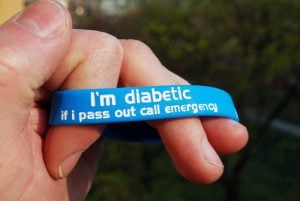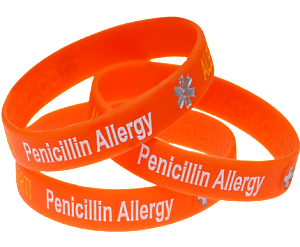Case Studies
Mediband brings you the latest case studies and news so that you can stay up-to-date with what might affect you, your family and loved ones. We help you to make better informed decisions to stay safe and healthy, and provide insight into how others in your circumstances have benefitted from wearing medibands. Mediband delivers relevant information and case studies in clear, easy to understand language that puts your health into context. Through medical content, insights from experts and real people, and up-to-date news, we help you understand: how it happened, what it feels like, what you can do about it, and why it matters. We're also very interested to learn from our customers' experiences. If you have any feedback for us, or would like to participate in a case study, we would be very interested to hear from you. Please email us or use our "Contact Us' form with your contact details today. Feel free to read the blogs and articles that follow and of course if you have any questions whatsoever, leave a comment and the Mediband Team will be sure to get back to you. At Mediband, we're driven by making your life and everyday living safer. If the questions are out of our depth, we will advise you accordingly, and of course, if you have a medical emergency, please visit your local emergency department or local Doctor. Worry Less, Live More!
-
Medical ID Bracelet - The Foolproof Way To Ensuring Your Child's Safety
 Children with illnesses such as diabetes, asthma or epilepsy, among other life-threatening diseases, should carry easily visible information to ensure passers-by can quickly understand that they need help in the event of an emergency when you’re not around.
While you could have them carry a slip in their pocket or wallet detailing their condition, paper can get damaged or lost. A medical ID bracelet is worn on the wrist and is indestructible. A allergy or medical ID bracelet also provides immediate visibility to passers-by and first responders, giving parents invaluable peace of mind when separated from their children.
Not the average medical ID bracelet
Little ones can be very obstinate and may not want to show the world – or their peers – that they have a medical condition. That’s where Medibands come in. Unlike other medical ID bracelets, Medibands for kids aren’t the stereotypical, unattractive bands your child may have seen on an older person – and associated with being uncool. They're slimline and colourful as opposed to being chunky and dull to look at, and come in an array of alternative colours and styles.
Get your child to pick out their own Mediband to make sure they feel like it's their choice to wear it and that it represents their own tastes and interests. Kids that have chosen their personal colours and styles for their Mediband are more likely to keep it at all times. Continue reading →
Children with illnesses such as diabetes, asthma or epilepsy, among other life-threatening diseases, should carry easily visible information to ensure passers-by can quickly understand that they need help in the event of an emergency when you’re not around.
While you could have them carry a slip in their pocket or wallet detailing their condition, paper can get damaged or lost. A medical ID bracelet is worn on the wrist and is indestructible. A allergy or medical ID bracelet also provides immediate visibility to passers-by and first responders, giving parents invaluable peace of mind when separated from their children.
Not the average medical ID bracelet
Little ones can be very obstinate and may not want to show the world – or their peers – that they have a medical condition. That’s where Medibands come in. Unlike other medical ID bracelets, Medibands for kids aren’t the stereotypical, unattractive bands your child may have seen on an older person – and associated with being uncool. They're slimline and colourful as opposed to being chunky and dull to look at, and come in an array of alternative colours and styles.
Get your child to pick out their own Mediband to make sure they feel like it's their choice to wear it and that it represents their own tastes and interests. Kids that have chosen their personal colours and styles for their Mediband are more likely to keep it at all times. Continue reading → -
ID Wristbands for Pharmaceutical Trials & Beyond
 Here at Mediband, we strive to provide useful IDentification wristband options for our clients of all shapes and sizes. One particular area of medicine we have helped simplify is within pharmaceuticals. These organisations are working hard to identify and develop new medications to help people throughout the world. But they also need the right tools to keep their patients organised and safe throughout any research process.
In one specific instance, we worked with a pharmaceutical firm in helping them determine the best options for medical ID wristbands in their clinical trials. Due to the regulations regarding direct-to-consumer advertising and prescription pharmaceuticals, we cannot discuss the company by name. However, we have provided this company a straightforward method to distinguish patients, treatments and all related components to their research trials.
These clients have used customised reversible ID wristbands to distinguish patients throughout these pharmaceutical trials. They distribute the bracelets based on the type of medicine being received. Additionally, the reversible printing allows other important alerts and indicators based on the specific treatment plan. Continue reading →
Here at Mediband, we strive to provide useful IDentification wristband options for our clients of all shapes and sizes. One particular area of medicine we have helped simplify is within pharmaceuticals. These organisations are working hard to identify and develop new medications to help people throughout the world. But they also need the right tools to keep their patients organised and safe throughout any research process.
In one specific instance, we worked with a pharmaceutical firm in helping them determine the best options for medical ID wristbands in their clinical trials. Due to the regulations regarding direct-to-consumer advertising and prescription pharmaceuticals, we cannot discuss the company by name. However, we have provided this company a straightforward method to distinguish patients, treatments and all related components to their research trials.
These clients have used customised reversible ID wristbands to distinguish patients throughout these pharmaceutical trials. They distribute the bracelets based on the type of medicine being received. Additionally, the reversible printing allows other important alerts and indicators based on the specific treatment plan. Continue reading → -
Autism and Your Child: Understanding ASD Conditions
 Many people have a pre-conditioned idea of what autism means. But – as any parent with a child on the autism spectrum will know – autism disorders are so wide-ranging, that many of these pre-conceptions are completely false.
The word ‘autism’ is used to refer to any individual suffering from one of the main conditions in the autism spectrum, or ASD. These conditions include Asperger syndrome and pervasive development disorder, among others. Because of the different symptoms associated with the different conditions under the ASD umbrella, one person’s experience of autism is likely to be very different to that of another. Continue reading →
Many people have a pre-conditioned idea of what autism means. But – as any parent with a child on the autism spectrum will know – autism disorders are so wide-ranging, that many of these pre-conceptions are completely false.
The word ‘autism’ is used to refer to any individual suffering from one of the main conditions in the autism spectrum, or ASD. These conditions include Asperger syndrome and pervasive development disorder, among others. Because of the different symptoms associated with the different conditions under the ASD umbrella, one person’s experience of autism is likely to be very different to that of another. Continue reading → -
Making Lives Easier (and Safer) with Medic Alert Bracelets
 Allergies, medical conditions and other diseases are all unfortunate problems many of us have to endure in our lives. While these types of diseases cause pain and suffering, the right medication and treatment can help keep them treated and under control.
We all work hard to ensure that our diseases or problems remain under our control at all times. However, there may be times where something happens beyond your scope of control. What happens when an emergency occurs related to your medical condition but you’re unable to communicate any essential information?
For many people, one simple solution can resolve this potential issue before Continue reading →
Allergies, medical conditions and other diseases are all unfortunate problems many of us have to endure in our lives. While these types of diseases cause pain and suffering, the right medication and treatment can help keep them treated and under control.
We all work hard to ensure that our diseases or problems remain under our control at all times. However, there may be times where something happens beyond your scope of control. What happens when an emergency occurs related to your medical condition but you’re unable to communicate any essential information?
For many people, one simple solution can resolve this potential issue before Continue reading → -
Allergy Bracelets
 One of the most common medical allergies is to penicillin – possibly because it is one of the most common antibiotics of all time. Having an allergy bracelet that tells treating professionals you are allergic to penicillin is one of the surest ways to prevent disastrous anaphylactic shock. Anaphylactic shock is an extreme – and rare – event. Most people simply come out in symptoms like rashes, hives, itchy eyes and swollen lips, tongue, or face. The symptoms of an anaphylactic reaction, which can be deadly, usually happen within an hour of taking penicillin. Symptoms include difficulty breathing, hives, wheezing, dizziness, loss of consciousness, rapid or weak pulse, skin turning blue, diarrhoea, nausea, and vomiting. Continue reading →
One of the most common medical allergies is to penicillin – possibly because it is one of the most common antibiotics of all time. Having an allergy bracelet that tells treating professionals you are allergic to penicillin is one of the surest ways to prevent disastrous anaphylactic shock. Anaphylactic shock is an extreme – and rare – event. Most people simply come out in symptoms like rashes, hives, itchy eyes and swollen lips, tongue, or face. The symptoms of an anaphylactic reaction, which can be deadly, usually happen within an hour of taking penicillin. Symptoms include difficulty breathing, hives, wheezing, dizziness, loss of consciousness, rapid or weak pulse, skin turning blue, diarrhoea, nausea, and vomiting. Continue reading →


